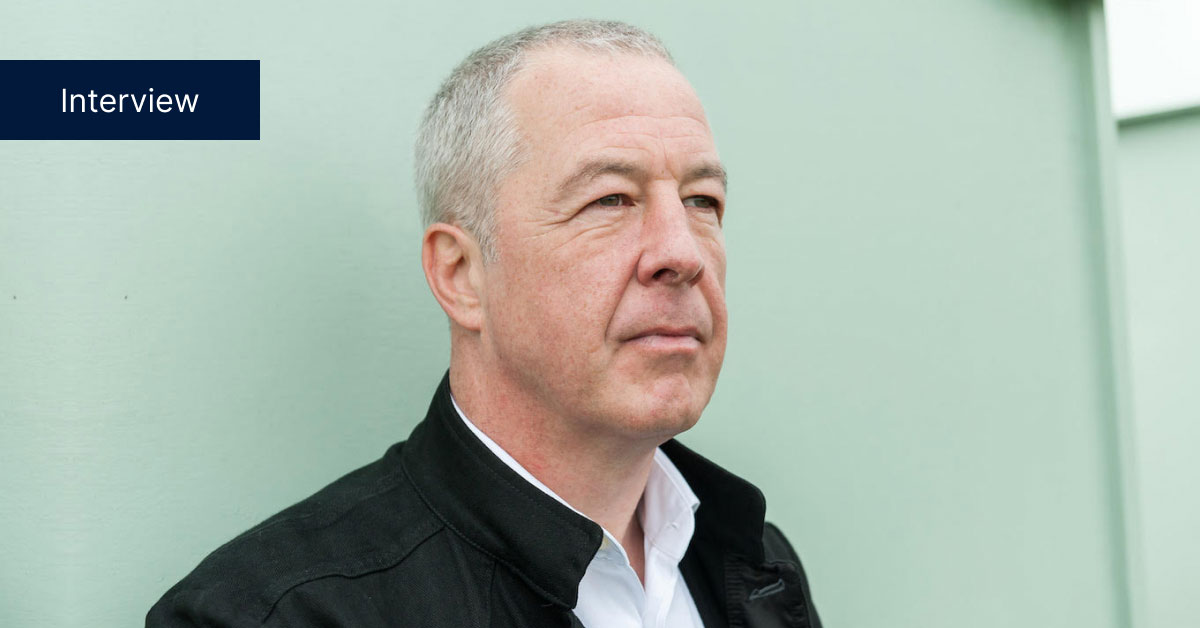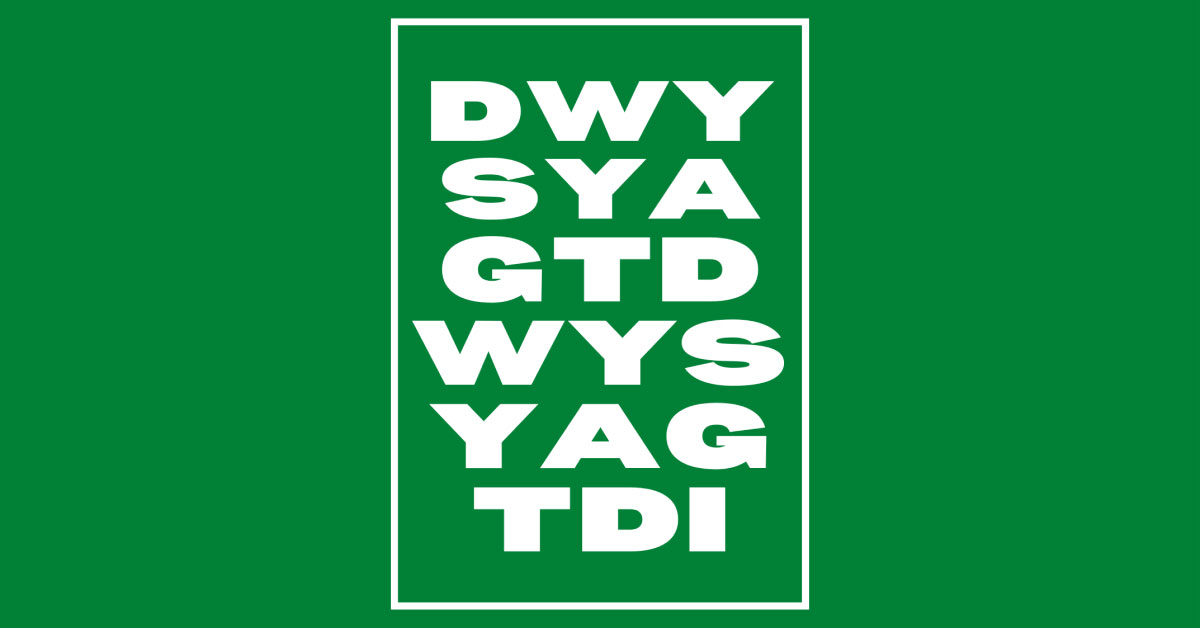
The author of How to Wow, Punk CX, and Punk XL explains why companies are potentially moving backwards by unwilfully overlooking the essential basics of customer experience.
CX Action Heroes is an ongoing zenloop interview series where we meet some of the bravest and boldest minds in the customer experience world.
Meet Adrian Swinscoe
Hailing from Scotland, Adrian Swinscoe is a best-selling author, CX thought leader, eXperience leadership coach, mentor, adviser, speaker, blogger, podcaster, keen rock-climber, and former teacher, economist and business leader – a true renaissance man.
For over 25 years, Adrian has been helping organizations of all sizes become customer-focused and to harness that power towards delivering better customer service and customer experiences. To name but a few, his clients have included Apple, Sky, Cancer Research, ING, Philips, Microsoft, KFC, and Costa Coffee.
He has published three books on customer service and experience, including the best-selling “How to Wow: 68 Effortless Ways to Make Every Customer Experience Amazing.” Adrian followed that up with the innovative, creative, and thought-provoking “Punk CX,” which he describes as a visual slap in the face for the customer experience industry. In 2021 he released a sequel to Punk CX in collaboration with some of the brightest brains in CX, the critically applauded “Punk XL” – the letters XL signifying his area of expertise, eXperience Leadership.
His candidness, wit, originality, and passionate desire to bring real change to an industry that often rests on its laurels – are just some of the many reasons we consider Adrian Swinscoe one of the top Action Heroes in CX today.
Our Interview with Adrian
We recently sat down with the aspirant CX Punk to examine why companies are failing badly at CX, his opinion on customer experience in the UK and internationally, how customer-centricity and its success starts and ends with the CEO, and why businesses must consistently stick to their word when building relationships with customers and employees alike.
Adrian, a key takeaway from reading your books, which we love, is the importance of being brilliant at the basics. Could you elaborate a little on that?
Say you go to a hotel, and they put a chocolate on the top of your pillow or something similar. It’s a nice touch, right? But if the bathroom stinks, you don’t give a shit about the chocolate. If you’re not brilliant at the basics, then you’re not even in the game.
People don’t focus on the basics because they take them for granted, think it’s somebody else’s job, and believe it’s not sexy. You have to roll up your sleeves and do the work.
We’re all like magpies, “ooh, shiny object!” so it’s surprisingly hard to get the basics right and be brilliant at them on a consistent basis. Because that means you’ve got to have a well-oiled machine where people are completely aligned, well managed, well resourced, and supported – that’s quite a complicated sort of thing. It’s hard work and takes time, effort, and consistency – and it’s not sexy.
I call it BB – and that means being Basically Brilliant.
In your view, what is the current state of the Customer Experience and Customer Service space?
So the whole global customer service and customer experience space feels like it’s dominated by an anglophile perspective and commentary – particularly tech companies that are in the SAS space, and that’s sort of understandable.
One of the problems with that is we end up getting almost caught up in this idea that everything is the same – like a homogenous thing – that good customer service and good customer experience is homogenous across the piece. It’s not.
It’s a bit like asking different people from different countries in different parts of the world what warm means. It’s all based on your own experience. It’s a relative term, right? Different places have different understandings of what good service and good experience looks like. To not understand that, or try to understand that, can be a mistake.
The German company Zalando figured this out and had been down that track a while ago. Even in Europe, they experienced differences across different countries. Germany has a tradition of mail order, where people can order things and settle their bills at the end of every month with an invoice. You can’t put that against instant e-commerce. So they had to try and adapt their business model to accommodate that. A bit like when they went to Italy and found out that about 30-40% of the population was unbanked. This was recently, only a few years ago – and they were like, huh? We make assumptions based on everywhere else being the same. So you can either choose not to serve those people, or you can choose to try to change your operating model to accommodate them. So they ended up changing, or flexing, their operating model to give people the opportunity to pay cash on delivery.
My point is, that there’s a variation. It’s always the same. This goes back to the basics we talked about, and variation can sometimes feel contradictory. But the basics will have a degree of variety depending on where you are, who you’re talking to, what sort of context, what sort of customer base, and so on. With customer service and experience, we need to be careful what we talk about.
You mentioned different approaches with different countries. Being from the UK yourself, what’s the status quo of CX in the United Kingdom right now?
Where are we at in the UK? Well, we’re not that different from many other places.
We’ve seen a massive shift to digital, understandably, over the last couple of years. People have achieved 5 to 10 years’ worth of transformation in the space of 24 months. But the big question you have to ask is, has anything really improved? And I guess the answer to that probably is, no, not really. Has the needle, in terms of improving outcomes, actually improved? No, probably not.
You might turn around and go; well that’s sort of understandable – the last couple of years has been about keeping the wheels on the bus. So the question then has to be, are we improving, or are we going backwards? And I think that’s a big and challenging question.
One could argue that we’re potentially going backwards. Not necessarily because of the companies’ efforts; many companies are trying to do things the right way. But I think there’s turbulence along the way. We’ve got a tight labor market, as in many places, and economically challenging conditions. I think that we’ve got distributed organizations. All these things mean that companies are getting pulled from pillar to post. It’s hard to do long-term planning when you’ve got quite a changing environment.
The one thing I’m more curious about – and I’m going to explore this in a written piece sometime in the near future – is the trend towards legislating in the Customer Service space. So there’s just been some new legislation that’s come out in the UK that protects customer service agents, or people that work on the front line, from abuse from customers. I just felt a bit confused by that. Why has it got to the point that you need to legislate for it? Why can’t the company, if they’re getting abuse from customers, just tell the customers to piss off? Why can’t you just give your people the power to hang up the phone? Just tell them to go. Why do you need legislation to support that?
Some companies don’t even touch upon this kind of customer abuse in their training. Without that, how can agents know how to respond to abuse without fearing repercussions?
Yeah, it’s crazy. I just look at it and think, NO! I get the idea that you should protect people, and I completely agree with that. But I find it mind-boggling that you need to get to the point that you can threaten somebody with legal recourse. Why not just tell them to go away? Thank you for your business; we don’t want it.
And then there’s another part of it. Do you know that there is legislation on the table in Spain that will legislate that companies have to answer calls within X number of minutes? I’m thinking, is that really your business? Why the hell do you get involved with that? Do we need this sort of legislation in the (customer service) space? I think we just need people and companies to be better at managing the relationships and interactions they have with their customers. Taking responsibility for what happens, and taking responsibility for the people that are trying to help customers.
Now, if the organization is producing rubbish but then trying to put lipstick on a pig, as it were, then don’t act surprised when people get hacked off that you’re selling them a shitty product or service, and then they come back at you and go, wtf. You know, don’t act surprised.
But, if you produce a decent product or service, and you’re supporting your people to try and help customers, then if a customer is in any way abusive, in a destructive and offensive personally directed attack, then yeah, by all means, tell them to go away. Look, if you’re that unhappy, we’ll refund your money.
“If you’re not brilliant at the basics (CX), you’re not even in the game.” – Adrian on why pillow chocolates in hotel rooms mean nothing if your hotel bathroom stinks
At zenloop, everyone works with customer-centricity in mind, starting at the top with the CEO. It’s our business. Obviously, not all companies are like that, even though some claim to be. In your book “Punk XL” you write about CEOs and business leaders preaching CX, but not really walking the walk. Not everyone has a working BS detector, so how do you separate the sincere from the insincere when it comes to being completely customer-focused?
Well, that sort of conversation can take place in many kinds of forms. I just ask this question: what does it (customer centricity) mean in practice?
And as you said before, the proof is in the pudding. If the product is not good, then it’s just lip service to say they’re a customer-centric company.
For people who want to potentially get fired, or not get hired (joking), ask the CEO or senior management when was the last time they served a customer that had a problem.
There’s a guy called Andy McMillan, who runs a company called User Testing, who talks about a unique idea they use in the UX space – a neat idea called Exposure Hours. How many exposure hours have you had in the last month? That sort of thing. It can also mean, how many calls have you listened in to? Have you done a shift recently serving customers? When was the last time you actually did it and interacted with customers?
Or if you want to get really kind of nerdy and slightly esoteric. I have these Japanese characters framed on my wall, which translates to ‘Going to the Gemba.’ I talk about this in one of my books. The idea is to ask people, “When was the last time you went to the Gemba?” Their response will be something like, “Gem-what?.” But then you have a conversation about whether they really understand. Is it just like a meme, a trope, or whatever the latest kind of fashionable thing is? What does it actually mean? How are you making it real? How are you making that real for me? What does that mean for me? What does it mean for you in your day-to-day job? How are you keeping it real?
Often you will hear instead, “I will check customer notes in Salesforce,” or some other tool
Yeah, that’s bullshit. There’s too much, “I’m checking this, I’m reading that, I’m reading the feedback,” and everything else. Okay, fine, but when was the last time you really were in front of a customer? And not on a sales call, but helping them when something went wrong. And if somebody turns around and says, “Oh, I’m so busy,” you don’t really care. You’re not willing to put the time in to create space to be able to do that? Because here’s the thing, it’s not just for your own knowledge, but it has a demonstrable impact on your people as well.
Very true. It’s leading by example.
Of course.

The Japanese symbol “Gemba” – meaning “the real place” where things really happen
A big topic right now in CX is the Action Gap. Companies listen to and understand customers to a degree, but nothing happens after. Maybe they have too much information, spend too much time in dashboards, or the data is wrong and irrelevant to their customers. The Action Gap is the inability to connect the dots between feedback and relevant actions. How can companies better bridge this gap and serve customers to the best of their ability?
Pick one thing. Or do one thing at a time.
What normally happens is, people get all this feedback and pull it all in. You now end up with this big bucket, a big list of stuff that you try to prioritize using impact, value, etc. You put things at the top of your list and you move things around until you say, “This is our list, ta-da!”
You’re at the end of the big plan. And then, nothing happens.
Just choose one thing, and don’t even think about anything else until you’ve fixed it.
Yeah, it’s like if you have trouble making the right decision. Just make a decision and make that decision the right one, instead of stressing out trying to make the right decision immediately. Picking one thing is a similar concept.
Pick one because here’s the thing: what you do might not be right, but by actually doing something, you’re developing a behavior and a capability in of itself, so you will get better over time.
I think that’s the point, you know, you’ve just got to get going.
“Ask CEOs or senior management, when was the last time you served a customer that had a problem?” – Adrian on what separates businesses that fully embrace customer-centricity in the workplace and those who do not
Employee experience is something else that is often overlooked. What can companies do to improve here?
It’s the same thing as with customers. You ask what they think is wrong, what’s broken, what needs fixing, and what things could be done to improve their experience – and then just go off and fix them. It’s the same thing if you flip it and treat your customers the same way.
So however small or slight, whatever gets in the way of an employee doing a good job. Ask, and they will tell you. And if you go back and fix those kinds of things, then I’m pretty sure you’ll improve their experience. But what you’ll also do is you’ll open up a channel, an honest and open channel to your employees.
Some leaders complain about their employees not doing the right thing and being a barrier to transformation, change efforts, and all these different things – instead of thinking, “Do your employees trust you?” If you’re assuming that they trust you, you’re starting from a position where trust is given rather than earned. That’s somebody drinking the Kool-Aid of their position of responsibility and authority. That’s utter horseshit.
We see it also in the political sphere. People get elected to high office, believing they should be trusted, and you’re saying to yourself, “Are you fricking mad?”
Speaking of trust, what can companies do better to earn the trust of both customers and employees?
(Editors note: Adrian points to a poster on his wall that reads ,“DWYSYAGTDWYSYAGTDI.”)
See the green and white poster behind me? It means, “Do What You Say You Are Going To Do When You Say You Are Going To Do it.”
It’s really simple. There can be all sorts of implications at the back of that. So don’t say anything if you’re not going to follow through.
Just deliver.
Just deliver. Great advice, Adrian. Speaking of advice, what’s the best advice you’ve been given professionally or regarding CX?
I’ll tell you one of the best pieces of advice, well, two bits of advice I’ve been given:
The first. Very early on, when I worked as an economist back in the 90s, I’d just had an excruciating experience delivering a presentation where I lost my place. I was horrible, horrible. I was presenting in the middle of a horseshoe, so I was right in the middle of a bull ring type of thing, and I completely lost my place in front of some very, very senior people. I eventually recovered but the whole experience was not very pleasant.
After, my boss at the time said to me, “So what did you learn?” I said, “Know your stuff back to front, front to back, inside out, upside down,” and then it doesn’t matter if you lose your place – because you’ve always got stories to tell. So it’s important to know your stuff.
The second bit of advice was when I was studying for an MBA and doing a bit of work for somebody on the side – and they said to me, “Don’t sound like an MBA, be an MBA.”
This was over 20 years ago, but what I took that to mean was – it’s not about the jargon and terminology and everything else – it means to talk about the subject matter, the people, the tools and the process, and anything else. Talk about the problem, understand the problem. Talk about it in a way that it doesn’t act as a barrier to anybody. That everybody can participate, everybody has got a perspective. I hear people talking about all these different fancy terms and stuff, and I’m really going… (shakes head).
Buzzword bingo often means an empty suit, so to speak. All talk, no action.
Yeah, it’s a bit like, why are you doing that? Why are you talking about all that stuff? You know, we’re dealing with a space that is ultimately about human beings trying to serve other human beings. That’s it.
That’s it, precisely. It’s not complicated, so don’t overcomplicate it.
Yeah.
So with CX, are companies making things too complicated? Trying to do too many things instead of keeping it simple? If you could change one thing about the Customer Experience and Customer Service industry, what would it be?
This is going to sound slightly heretical, but sometimes I wish the whole customer experience space would just go away. The reason I say that is because there’s this industry that’s been created around customer experience. The problem is, people think they can manage and control a customer’s experience, but you can’t, right?
There’s a distinction. There’s the stuff that happens, and then there’s what we make it mean. We can’t control the latter. We can only really influence the former, the stuff that happens.
We try and get close to understanding our customers, and having an influence, to give ourselves a high likelihood that we’re gonna have a positive outcome, or a positive reaction. But we need to get away from the idea that we’re actually managing somebody’s experience. No, we’re not, we’re managing ourselves and what we do.

“Do what you say you are going to do, when you say you are going to do it.” – Adrian on how companies can successfully gain the trust of their customers and employees
You have three best-selling books, How to Wow, Punk CX and Punk XL, plus a hugely popular podcast with over 400 episodes. What’s next for Adrian Swinscoe?
Right now, my focus is settling into a new place. We’ve just moved to Edinburgh, almost 500 miles from where we were before. So this year is more about settling into a new place.
Although, I was speaking with somebody the other day, and I might do an updated version of ‘”How to Wow: 68 Effortless Ways to Make Every Customer Experience Amazing.”
How to Wow, that’s your first book from 2016, right?
Yeah, and it’s stood the test of time. When we initially wrote it, we thought it might have a shelf life of about two or three years, but it’s consistently stood up. An updated version might be something that’s interesting to do. Watch this space…
Adrian Swinscoe is a best-selling author of three CX books, “How to Wow”, “Punk CX”, and “Punk XL.” He’s also a frequent blogger, host of the popular “Punk CX Podcast,” and speaker on all things related to customer service and customer experience. He has been helping large and small companies become customer-focused for over 25 years. He also thinks Punk is better than Prog Rock.
To learn more Adrian and his work, visit his website, or connect with him on LinkedIn, Twitter or Instagram
Discover how CX Action Management can successfully elevate the Customer Experience in your company and become an Action Hero yourself!






